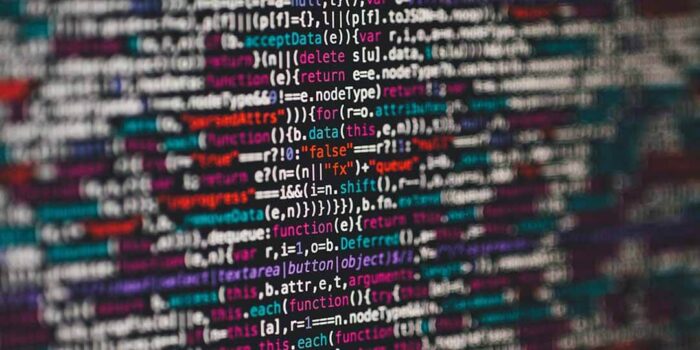There are several important custom software security checks that development teams must conduct annually. System security is a mission-critical issue for today’s top-performing software engineering teams. When left unmonitored, security flaws can lead to a damaged reputation, diminished stakeholder confidence, and catastrophic information technology (IT) emergencies. Not to mention, weak security credentials put companies at a higher risk for data loss, information loss, hacks, or system breaches. That being said, enterprise tech firms need a proactive, forward-looking approach to conducting yearly quality assurance (QA) inspections. As a software developer yourself, you should know exactly what these intensive, security-focused processes entail. This way, you can fortify your work environment, maintain user trust, and simplify project management needs. These efforts can help facilitate organizational growth and minimize operating costs. Read on to learn the most important software security checks that development teams should conduct annually.
Security Policy Checks

Source: isms.online
Your yearly policy review is one of the most straightforward software security checks. This is where you look at your existing security software development policy and make any necessary updates. This process is vital to prepare your employees, IT infrastructure, users, and processes for the next year ahead. Review the protocols, practices, and standards currently in place for system-wide security. Then, you can make adjustments and modifications based on recent application security risks, threats, priorities, or vulnerabilities. You should also clarify the existing roles and responsibilities that are spread across your team. The policy review is usually the best time to make adjustments to employee authorizations, access credentials, and titles. Surely, make sure to conduct a software security policy review every single year.
Container Contextual Analysis
In addition, the best programming teams regularly conduct container contextual analyses. You need to utilize an advanced security platform to perform these advanced checks. For example, JFrog Xray is a powerful DevOps-centric security solution for taking intelligent action. With these resources, you can conduct inspections that assess CVEs applicability, streamline binary analysis, and review source code. These scans help minimize vulnerability noise and false positives – thanks to intelligent prioritization functionality. In addition to contextual analyses, you can use these tools to secure infrastructure as code (IaC), fortify your software supply chain, and leverage accelerated remediation. Plus, these resources support software composition analysis (SCA), automated governance, and visibility evaluation. With these features, you can easily defend against malicious activity, prevent security issues, and detect malicious packages. Certainly, containerized contextual analysis is an essential software security check to conduct every year.
Code Reviews

Source: queue-it.com
Even after release, you should still conduct annual code reviews. Your central codebase could be accidentally compiled, organized, edited, or modified throughout the year. Scripts are known to constantly change, re-configure, or shut down – even when we don’t realize it. Sit down with some of your development peers and thoroughly read the code from start to start to finish. During your initial glance, jot down any potential abnormalities or points of concern. Then, you can return to these pieces later with a more thorough, careful, and detail-oriented pair of eyes. You should also take note of all the dependencies and prerequisites. This way, you can begin thinking about different tactics and strategies for reducing potential redundancies. Naturally, the annual code review is the ideal way to guarantee consistency, optimize performance, and manage project quality. Indeed, conduct recurring software code reviews on an annual basis.
Access And Authorization Inspection
There should also be a yearly concentrated effort toward software access and authorization inspection. Annually, take time to analyze everybody who has a developer or administrative access to your software application. Look for employees, engineers, executives, or managers that no longer need these credentials. This way, you can lower the risk of brute force attacks or system takeover. Then, encourage those with valid access credentials to update their passwords and authorization details. If possible, encourage them to set up secure login systems like multifactor authentication (MFA). Traditional passwords require complex, hard-to-guess codes that use a combination of letters, numbers, and character symbols. This way, you can cultivate a culture of cybersecurity and data protection. Ultimately, this is crucial to maintaining trust, transparency, and order in the workplace. Absolute access and authorization is an important security check to perform every year.
Security Awareness Training

Source: mimecast.com
Also, an annual effort should be made towards completing security awareness training. The data protection and software security world are in a continuous state of evolution. To be successful, teams must stay up-to-date with the latest security protocols, user protection strategies, governance protection requirements, and compliance needs. Security training is a great resource that gives teams the knowledge, practice, and real-world exposure they need. In these sessions, you’ll learn relevant information about new hacking techniques, exploitable vulnerabilities, and malicious cybercriminal behaviors. After security training, have the entire team get together and discuss their findings. Oftentimes, you’ll take the most away from this post-training de-brief. With these sessions, you can facilitate a security-driven culture, empower development employees, and avoid catastrophic incidents. Definitely, performing yearly security awareness training is an annual check that cannot be neglected.
There are several imperative custom software security checks to perform on an annual basis. Give yourself plenty of time every year to conduct a brief software security policy review. This is a good time to inform your team of any new practices, policies, or software security terms to know. In addition, conduct yearly container contextual analyses. You’ll need to use a powerful platform for intelligent software supply chain security, impact analysis, and automated governance to perform these inspections. You should also try to perform a solid code review at least once a year.
Plus, make annual efforts to review passwords, access credentials, and system authorization details. Once you’ve done so, encourage active developers and employees to update their information for top-tier security. Furthermore, proactive teams make an annual commitment to conducting security awareness training. Regular training is critical to eliminate downtime, inspire user confidence, and guarantee ongoing compliance. Follow the points above to learn the most important software security checks that development teams should conduct annually.




